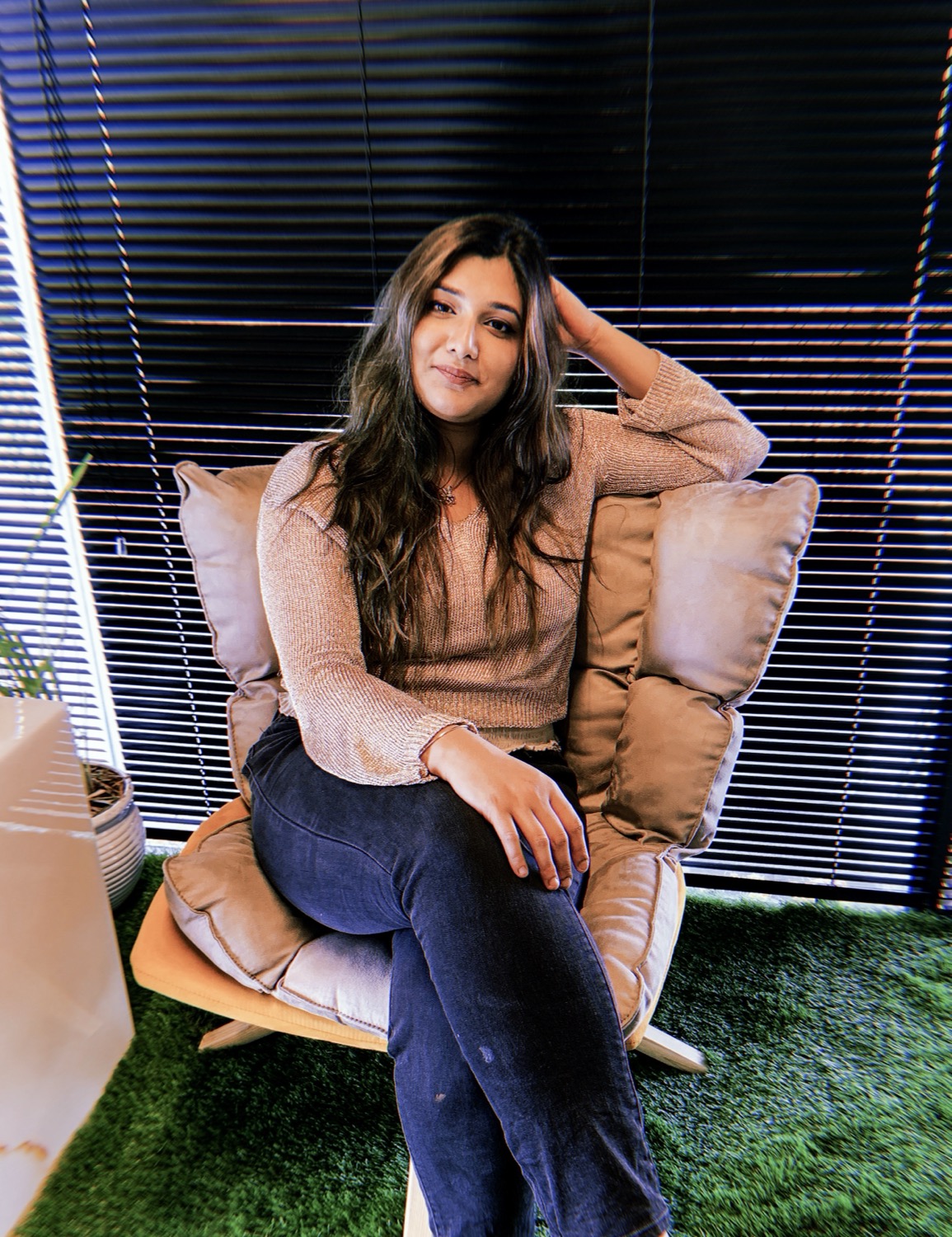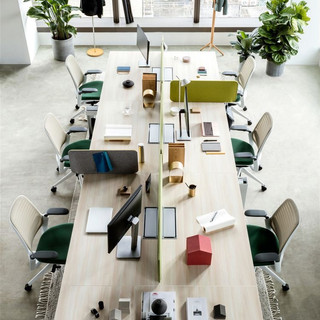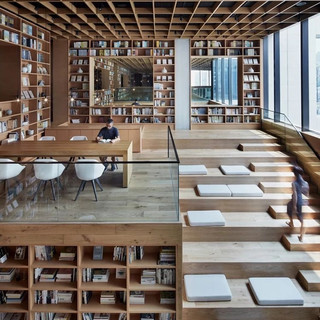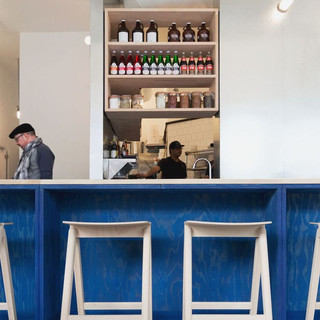Redefining Workspaces
- Ishita Shreekant

- Apr 19, 2021
- 7 min read
Updated: Feb 21, 2022
The first thought that comes to mind when one thinks of an office is usually “work”. There is nothing wrong with this, the basic element of an office is its workspace, after all, and many people are indeed very passionate about their work and enjoy the experience and the rush.
However, when everything seems like it’s business 24/7, work can become a place that many people despise, and seek an escape from. My own experience has been a testimony to this fact. I love my work and during my internship, I was so happy to learn new things everyday that I would work with sheer focus, right from 10 AM, to 6 PM. After 6, though, when my brain couldn’t match the same level of focus that I had throughout the day, I would find myself in a hurry to leave, and when I didn’t have a full plate on some days, I would hate sitting on my desk. The only place my friend and I could find some solace in, during lunch, was outside the office premises, with a walk under the trees, even with the harshest sun.
This is a common observation in most Indian workplaces. There is a reason why countries that score much higher on the happiness scale, and boast a better quality of life, encourage only 4 workdays a week, to maintain a balance between work and rest.
Most of the modern co-working spaces offer a quick step away from the workstation to help decrease one’s stress and to clear the mind.
The design of the physical environment can play an important role in ensuring that people take real breaks. Not only do chill-out rooms offer people somewhere to go to get away from it all and recharge their batteries, it’s an important signal from senior management that it’s perfectly acceptable to do so. The alternative can be the creeping fear that ungluing oneself from the workstation is perceived as slacking by managers and colleagues and the evolution of a culture of desktop and digital presenteeism.
Intelligently designed workspaces promote and prioritise mental health and employee satisfaction, to begin with. The concept of “Rec” rooms is a common feature in these offices: a space for informal meetings, where one can socialise, eat, rest, or even take a power nap.
The importance of these breakout spaces is even more valued in a workspace with a team of creative individuals. These breakout areas are the breathing spaces in an office.
Even an artist’s or a writer’s block can sometimes be relieved by a change of scenery.
The benefits of breakout spaces are numerous. Not only do they make an employee more focused during work time, but also increases her/his creativity and productivity. Apart from personal mental health and growth, these spaces improve the interpersonal relationships in the office, and those with the clients or collaborators.
The productivity/success of an office isn’t defined by how many workspaces that the office has to offer, but the balance between work and rest that it inevitably creates.
At ArtXstasy Studio, we value and cherish the people who work with us, and those that we serve. Despite the limitation in space for the startup, we have managed to create a variety of working spaces and experiences, that offer a much needed change. Gone are the old days of boring desks and sitting in front of the big screens throughout the day.
Need a break from the screen, or feeling a little exhausted or just bored? Grab a seat at the coffee bar, drink in the aroma of freshly brewed espresso while you look out at the canopies of trees. Need a different setting to brainstorm new design concepts and sketch? Grab a stool and hop on our work counter, with its own mini library for inspiration.
After careful consideration and numerous planning and design iterations, we have designed a variety of furniture pieces for the different spaces and experiences in our working hub, that suit our needs and offer a change in scenery that every employee so dearly deserves.
Change begins with us. When we work better, and smarter, we can design much better for all those we serve.
An individual spends more than half of their lives working, so why not make it an enriching and an enjoyable space?
Here are a few snapshots from our studio space that explain the idea of informal workspaces better.
If you’d like to revamp your office space or are starting from scratch, but not sure where to begin, here are some pointers for you, along with some design ideas to tickle your inspiration bone. Feel free to contact us for a detailed design, tailored to your exact needs.
1. Variable workspaces
I cannot stress this enough, but change is necessary. One cannot and should not be expected to sit and work in one spot all day, for days on end. A change of setting with a relaxed working space can do wonders for the mindset. Also consider using dynamic and flexible elements, like movable partitions, furniture pieces that can be modified as per your needs.
2. Brainstorm
Ideas are what make up a good office. There should always be scope for good ideas, employee inputs and brainstorming sessions, to keep work, the office environment and other factors up to date with the changing times. The employees should feel comfortable in a space they spend most of their day in, and should believe that their opinions matter. Use of community boards, pinboards, walls to write on can be very useful. Interestingly designed spaces for brainstorming sessions, the freedom to express opinions, sketch out prototypes and ideas, and have informal discussions; A creative alternative to a formal conference space.
3. Connection with the outside world
Having minimal visual barriers to the surroundings, or the natural spaces is crucial. The space should feel connected to the outside, while maintaining the required level of privacy and barrier from disturbance. Looking outside occasionally also gives a relaxing visual break to the people working on their computers for hours on a stretch.
4. Aesthetics Matter
Aesthetics create the first and the lasting impressions in any space. They comprise of use of colours, finishes and textures, the layout, the type and quality of furniture used, and other visual elements. With the right aesthetics, you can transform your space in an inspiring, cheerful or productive place, or end up creating a place that your employees despise or are in a hurry to escape from.
Branding is important as well, as it acts as a reminder of community belonging in the workplace.
5. Turn the Green up
Biophilic design can greatly affect the internal spaces, by incorporating a variety of green elements. Bringing the nature inside makes any space more appealing and less stressful, along with purifying the internal environment.
6. Lose the Clutter
Your mama was right when she kept picking on you for cleaning your room. Clutter affects the overall morale and affects the productivity and focus of an individual. Use of good quality, intelligent and convenient storage spaces so the primary working spaces are always tidy is crucial.
7. Soak up the Vitamin D
There’s no better workspace than one that is open, full of light and airy. Opening up the interior spaces to sunlight creates a happier and a more inviting environment. It’s scientifically proven to boost productivity and reduce laziness. Using natural light also reduces the use of artificial lights in the day, and eases the energy load of the office. So ditch the block walls, and the opaque blinds, and open up your spaces with more glass.
8. Open up the space
Another way to achieve open, airy spaces is to ditch block walls used as partitions, false ceilings that considerably reduce the height of the spaces and the use of light colours that largely affect the perception of area, and make any space seem larger.
9. Open up your senses
Apart from visual elements, it is important to incorporate other senses in the form of textures, sounds and scents. Opening up the spaces to the outside and bringing in natural sounds, or creating natural sounds artificially, creating textures on walls or pieces of furniture, and using scent inducing features.
Try to incorporate these scents to achieve the desired atmosphere: peppermint for mood upliftment, lavender to reduce stress, citrus to lift your spirits, cinnamon and pine for focus.
10. Art
Apart from creating a statement about the brand values, artwork can greatly increase creativity and enhance the comfortable working environment.
11. Home environment
To create a more comfortable environment, bring in some homely feel to the space. Cushy seats, places to rest, and a do-it-yourself space in kitchens where people can choose to prepare small meals for themselves.
12. Read, learn, grow
A well-designed office doesn’t only focus on aesthetics and maintaining a certain level of productivity, but aims to help its employees grow. An environment where a person continually grows mentally is one that she/he will always cherish and value. “Books train your imagination to think big.”
Offices should have libraries, and appropriate spaces for reading, and designated spaces for conducting workshops, and other activities to keep the employees up-to-date.
13. Encourage activeness
Some offices are taking health to the next level by incorporating spaces for exercise. This should not only be limited to designated gym spaces, but can also be achieved by intelligent pieces of custom furniture. Another office trend that is ergonomically satisfying is the use of a standing desk. It helps them move around and stay active throughout the day.
14. Refresh
Our bodies need nourishment to keep going. You can work on a rumbling stomach only for so long before you feel your brain shut down.
Basic provision of coffee, tea, water is crucial, and if your office space is big enough, think of investing in a small café. Café spaces not only save employees from going out to eat, but also create interesting meeting and recreational spaces in the office premises itself.
For more design inspiration, check out our Pinterest board on Workspaces.





































































































Comments